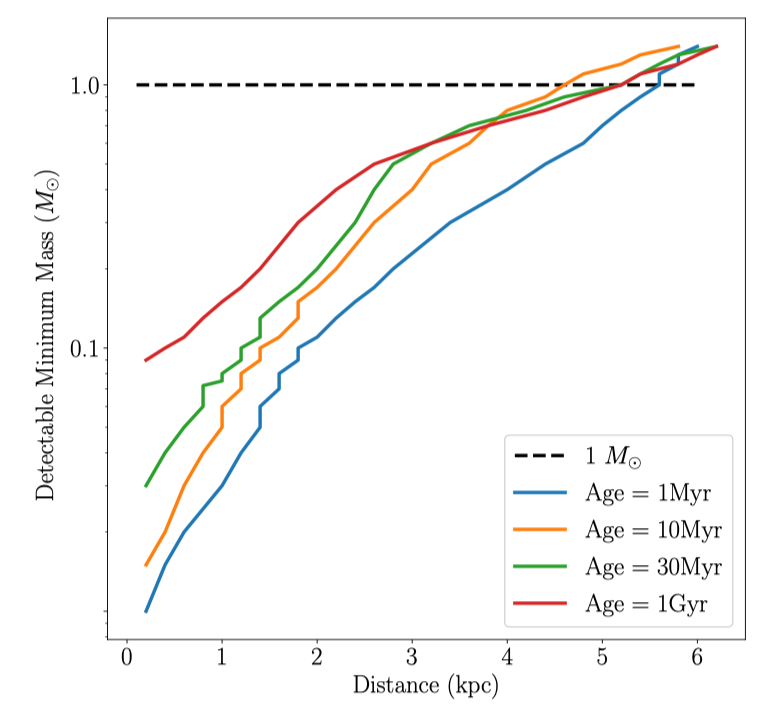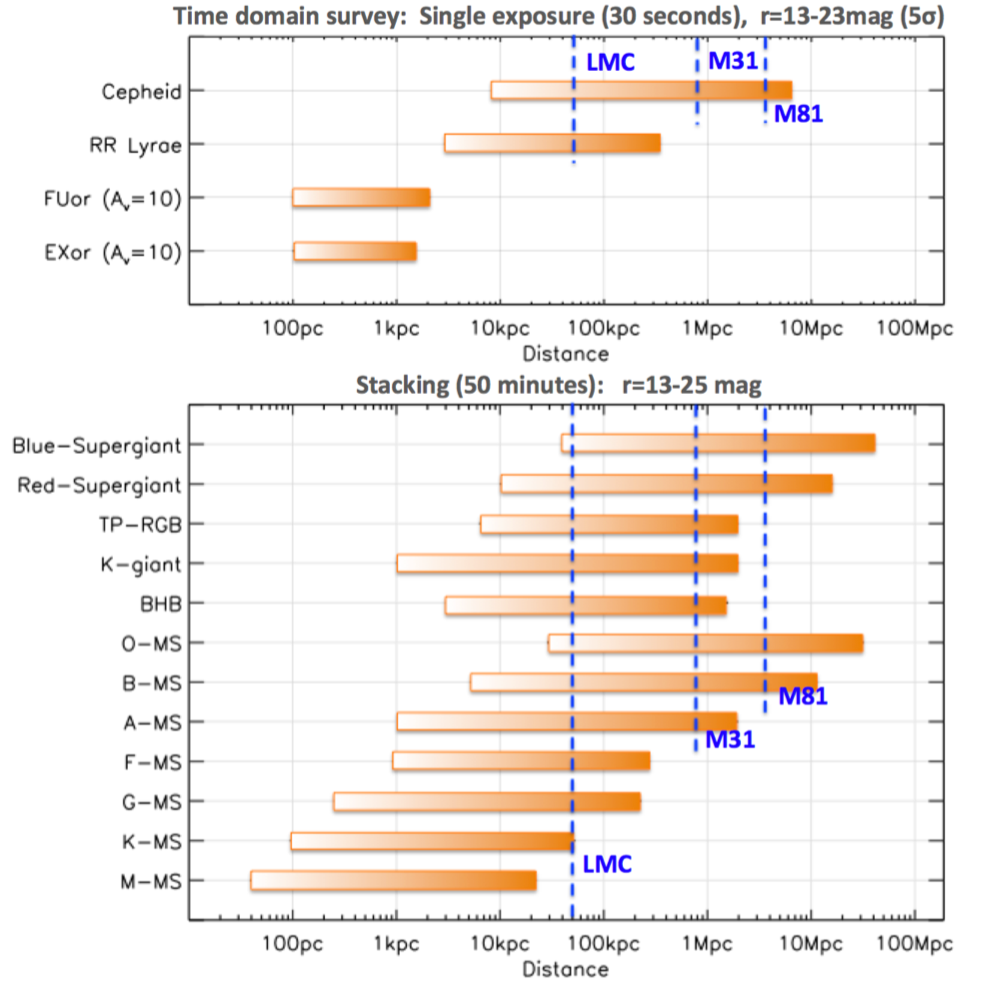Mapping the Milky way
3D dust distribution
Dust distribution is a necessary piece of the Galactic structure studies. Dust extinction is a commonly-used dust mapping technique. By measuring the reddening and extinction towards a large number of stellar objects, a continuous dust density distribution can be recovered. Based on the modern wide-field optical photometric and spectroscopic survey data such as SDSS, Pan-STARRS1, and Gaia, the three-dimensional (3D) Galactic dust distribution can be mapped in the arcmin-scale spatial resolution, with which the structures of dust Galactic disk such as warp and spiral arms have been revealed. The WFST survey is over 2$-$3 magnitude deeper than Pan-STARRS1 (in $r$ band). Therefore we expect to obtain 3D dust maps using WFST data with higher resolution and dynamical range than previous 3D maps, which will be helpful to trace the Galactic dense regions associated with star formation and constrain the Galactic models. Especially, the high sensitivity and photometric accuracy of the WFST survey will allows us to investigate the diffuse interstellar medium at high Galactic latitude such as the intermediate-velocity clouds (IVCs) that are considered as an inflow of gas consisting of recycled disk material and thus believed to be connected to a Galactic fountain process.
Stellar Clusters
Stellar clusters in the Milky Way are ideal test beds for the stellar evolution from the pre-main sequence to the post-main sequence, given by the large age spread over several magnitudes from a few to tens of Myr (open clusters) to a few to tens of Gyr (globular clusters). The co-eval, co-spatial, and iso-metallic stellar members provide abundant information of the stellar astrophysics. Despite their importance to stellar astrophysics, most star clusters have been relatively poorly studied due to their large distances or their large angular sizes.

Figure 1, The minimum stellar mass of the open cluster member varies with distance from near to far. The isochrones of low-mass stars at 4 ages are shown in different colors. For open clusters, an empirical relation $A_V$ = 1.5 mag kpc$^{-1}$ is used in the distance module.
The detecting limit of the finally stacked images from WFST survey in the $r$ band goes to $r=25$ mag, 2$-$3 magnitude deeper than the Pan-STARRS1 survey. For the open clusters confined in the galactic plane, Figure~1 estimates the minimum stellar mass detected by WFST varying with distance from near to far. For clusters with distances within the 5~kpc from the sun, WFST can resolve stellar mass down to $\lesssim1,M_\odot$, and ensure rather complete mass estimate for these open clusters. The relative young open clusters and the even younger embedded clusters (better studied in the IR wavelengths) represent the current star formation rate of the Milky Way. The 3D distributions of these two types of young clusters map the 3D star formation rates of the Milky Way, which, together with the 3D molecular gas map, provide the largest view of baryon cycle of the Milky Way. For the nearby ($\lesssim1,$ kpc) young clusters, WFST’s accuracy, sensitivity, and multi-epoch observations allow for the detection of their members down to the brown dwarf mass range, a much better characterization of low-mass star formation in stellar clusters, and an deep investigation of initial mass functions.
${\it Gaia}$ mission has provided a list of reliable members for more than 200 known clusters within 2~kpc from the Sun. These clusters range in age from 10~Myr to several Gyr and thus are excellent calibrators for the mass–dependent relationship between stellar rotation and age. While ones obtain the ages of these clusters from color-magnitude fitting using the Gaia data, the rotation periods of individual members in each cluster can be derived from the WFST time-domain survey. A calibrated mass–dependent relationship between stellar rotation and age will be the key to investigating the star formation history of the milky way.
Structure of the Milky Way
The stellar structure of the Milky Way is composed of four components: a bulge, a thin disk, a thick disk, and a diffuse stellar halo. The knowledge of the structure of the Milky Way has been significantly improved with the data from various surveys, e.g. SDSS, Pan-STARRS, LAMOST, and Gaia, and the development of new technologies. However, there are still many unknown issues about the fine structures of the Milky Way, and there are still many unresolved problems in its formation mechanism.

Figure 2, Detectability of different types of stars vs. the distances in the WFST images with single exposure (top) and stacked images (bottom).
As a space facility, the GAIA satellite can observe the entire sky, while its magnitude limit is $\sim20$~mag and it is not suitable for studying dense stellar fields. In order to investigate the precise structures of the Milky Way and their formation mechanism, it is necessary to perform a deep survey which covers a large field of view and can detect a larger number of low-mass stars to large distances, see the bottom panel in Figure~2. An accurate three-dimensional distribution of stars in the Milky Way and a decomposition of the Milky Way into different components are crucial for constraining the formation mechanism of different components of the Milky Way. To distinguish the different components, one need to measure the metallicities of individual stars which requires deep and high precision photometric data in $ugr$ bands. Current surveys with large field of views are either lack of the $u$-band filter (e.g. Pan-STARRS) or too shallow in $u$-band (e.g. SDSS or SkyMapper). The up-coming LSST will reach a depth of $r=27$ mag from the co-added images, but its observational area is limited in the southern sky.